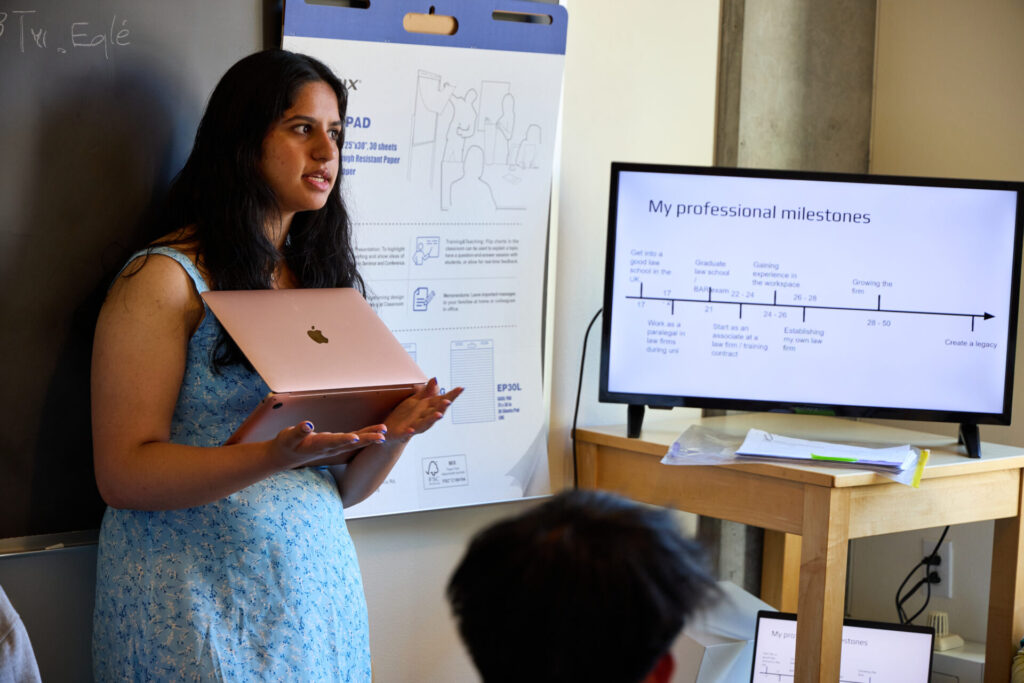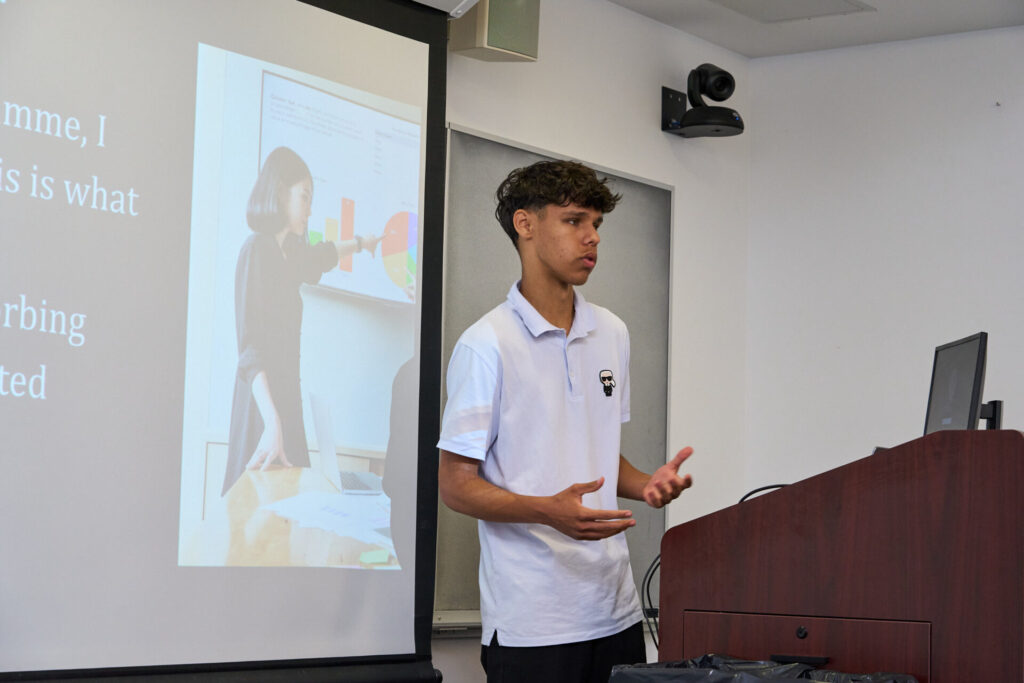Effective revision methods are the key to unlocking better exam performance. However, not all revision techniques are created equal. For students looking to maximize their learning, using scientifically-proven methods can make the revision process not only more effective but also less time-consuming. Techniques such as spaced repetition, active recall, and the blurting method stand out for their efficiency in helping students retain and recall information. When tailored to suit individual learning styles, these methods can transform how you prepare for exams. Below, we’ll take an in-depth look at 17 of the most impactful revision strategies, breaking down what makes them work and how to use them effectively.
1. Spaced Repetition
How It Works:
Spaced repetition is based on the psychological principle of the “spacing effect,” which suggests that reviewing information over increasing intervals strengthens memory retention. Instead of cramming all at once, you revisit topics after set periods of time, ideally just before you’re about to forget them. This process effectively combats the “forgetting curve,” a phenomenon recorded by Hermann Ebbinghaus, which shows how quickly we lose newly acquired information if it’s not reinforced.
How to Apply It:
- Divide your material into manageable chunks.
- Design a review schedule using spaced intervals. Start by revising a topic a day after your initial study session, then after three days, then a week, and so on.
- Use tools such as Anki or Quizlet, which are excellent for creating flashcards that automatically adjust the spacing based on what you struggle to remember.
Example in Practice:
If you’re to revise for a Biology A-Level, you can review photosynthesis the day you learn it, revisit it after three days, and return to it after a week. Each time, test yourself until the information feels second nature.
2. Active Recall
How It Works:
Active recall is a straightforward and one of the more powerful revision methods grounded in memory science. When you actively retrieve information without looking at your notes, you reinforce neural pathways associated with that knowledge. It helps shift facts from short-term memory into long-term storage, strengthening retrieval cues for exams.
How to Apply It:
- After reading a chapter or attending a lesson, close your resources and attempt to recall everything you’ve learned by writing it down or speaking it aloud.
- Use tools like flashcards to quiz yourself repeatedly. The key is to answer without looking at hints or guides.
- After recalling, check your responses. Identify gaps or errors and focus your next revision session on those weak points.
Example in Practice:
If you’ve studied a chemistry topic, write down key reactions and processes from memory. For instance, try recalling the entire equation for cellular respiration and then check your work against your notes.
3. Blurting Method
How It Works:
Blurting is an active recall technique in which you write down everything you know about a topic in one shot, from memory. The act of “blurting out” forces your brain to retrieve stored information, building stronger memory connections. It also highlights knowledge gaps in a stark and immediate way, showing exactly what areas need more work.
How to Apply It:
- Pick a specific topic or subtopic, such as “causes of World War I.”
- Write down everything you remember about it without referring to your notes.
- Review your notes or textbook afterward to find details you missed or got wrong.
- Repeat the process regularly to track improvement.
Example in Practice:
If you’re preparing for a literature exam, you might blurt out everything you can recall about a novel’s main themes, characters, and symbols. Then, compare your list to your study guide and revise the missing points.
Join the Immerse Education 2025 Essay Competition
Follow the instructions to write and submit your best essay for a chance to be awarded a 100% scholarship.

4. Elaborative Interrogation
How It Works:
This revision method revolves around asking “why” and “how” questions about the material. Elaborative interrogation prompts deeper understanding and encourages you to link concepts, making them easier to remember later. It’s especially effective for subjects like science and history, where logical connections carry significance in the material.
How to Apply It:
- After reading a section, pause and ask yourself questions such as “Why does this happen?” or “How is this connected to other concepts I’m studying?”
- Answer in your own words, even if the explanation is simple.
- Revisit these prompts in future study sessions to ensure you truly understand the material.
Example in Practice:
If you’re studying physics and reviewing Newton’s laws of motion, ask, “Why does inertia occur?” or “Why does force equal mass times acceleration?” Write down answers that reflect your comprehension.
5. The Leitner System
How It Works:
The Leitner system optimizes flashcard use by categorizing cards based on how well you know the material. This technique ensures you spend more time reviewing harder topics and less time on concepts you’ve already mastered.
How to Apply It:
- Create flashcards for your topic.
- Divide your cards into categories or “boxes” based on how well you can answer them.
- Box 1 contains cards you don’t know well.
- Box 2 contains cards you know somewhat.
- Box 3 contains cards you’ve mastered.
- Review Box 1 cards daily, Box 2 cards every other day, and Box 3 cards weekly.
Example in Practice:
For a foreign language exam, create a flashcard for every new term and place it in the correct Leitner box after attempting to recall it. Shift it forward when you succeed, or backward if you fail.
6. Retrieval Practice
How It Works:
Retrieval practice is a variation of active recall where self-testing serves as a central revision strategy. Frequent testing helps improve retention compared to repeatedly re-reading information. Research shows that retrieval strengthens long-term memory by solidifying neural associations.
How to Apply It:
- Generate practice questions for each topic.
- Set timed review quizzes for yourself, replicating exam conditions.
- Regularly revisit questions that you couldn’t answer correctly the first time.
Example in Practice:
If studying history, prepare a set of timeline-based questions and flag areas you’re unsure about for extra practice.
7. Dual Coding
How It Works:
Dual coding combines verbal and visual material to enhance understanding. The brain processes visuals and text differently, so combining both reinforces learning.
How to Apply It:
- Create diagrams, charts, or mind maps to pair with your written notes.
- Annotate infographics or add symbols to your work to emphasise key information.
- Use illustrated textbooks to see examples of dual coding in action.
Example in Practice:
For anatomy revision, draw labeled diagrams of organs while simultaneously summarising their primary functions with paragraphs of text.
8. Interleaved Practice
The Science Behind It
Interleaved practice involves mixing up different topics or types of problems within a single study session, instead of focusing on just one at a time. Research has shown this method strengthens problem-solving abilities and enhances your understanding of how different concepts relate to one another. By alternating between subjects or skill sets, you create a more robust neural network for retaining information. However, this revision method is most effective once you have already developed a foundational understanding of individual topics. Early in the revision period, it’s better to focus on one subject at a time to build confidence and familiarity with the material. Interleaved practice is particularly useful in the later stages of revision, as it mimics the unpredictable nature of exam questions, helping you transition from isolated learning to applying your knowledge across varied scenarios. This timing ensures you consolidate prior learning while improving adaptability for problem-solving under test conditions.
How to Apply It
- Begin by collecting a mix of questions or problems from multiple subjects or topics you are studying, ensuring they include ones you previously answered incorrectly or found challenging.
- Instead of tackling one topic at a time, rotate through these questions in a single session. For example, solve a math problem, then move to a biology concept, and follow that with a history timeline question.
- Keep the sequence unpredictable to mimic exam conditions. This could involve alternating between different problem types, such as answering a multiple-choice question for history, analyzing a graph for science, and then solving an equation for math.
- Focus on active problem-solving to engage with the material, and review solutions or explanations immediately after attempting each question.
- Continuously add newly challenging questions to your pool to keep the practice dynamic, ensuring a constant focus on areas that need improvement.
Example in Practice
If you’re preparing for math, science, and history exams, start by selecting a mix of questions you’ve struggled with in each subject. For instance, grab a trigonometry problem you got wrong before, a physics question on Newton’s laws, and a history question about key events in the 18th century. During your study session, tackle the trigonometry question first, then move straight to the physics problem, and finally, to the history question. Continue rotating between these different topics, keeping the order varied, and addressing a mix of question types. By doing this, you challenge your brain to switch contexts, which strengthens your ability to adapt quickly to diverse scenarios, just as you’ll need to do during the exam period – where you might have exams on two totally different topics on the same day.
9. The Feynman Technique
The Science Behind It
Named after renowned physicist Richard Feynman, this revision technique relies on the principle that teaching a concept simplifies and clarifies it in your own mind. When you explain an idea, you are forced to identify gaps in your understanding. This is one of the revision methods that strengthens your ability to recall and articulate knowledge.
How to Apply It
- Pick a topic or concept you want to study effectively.
- Write out a simple explanation as if you’re teaching a beginner. Use straightforward language, avoiding technical jargon.
- Go back to your notes or textbooks to clarify any points that felt unclear or incomplete during your explanation.
- Revise and refine your explanation until it is clear and concise.
Example in Practice
For a biology topic like enzyme activity, explain in basic terms how enzymes work, using simple analogies like a “lock and key.” If you struggle to explain how temperature affects activity, revisit your notes to strengthen that part of your understanding.
10. Mnemonics and Acronyms
The Science Behind It
Mnemonics and acronyms work by associating hard-to-remember information with memorable phrases or patterns. This technique leverages the brain’s natural predisposition to remember patterns and narratives better than arbitrary lists.
How to Apply It
- Use classic mnemonics that are already well-known for common topics. For example, to remember the order of operations in math, rely on PEMDAS (Parentheses, Exponents, Multiply, Divide, Add, Subtract) or “My Very Eager Mother Just Served Us Nachos” for the planets.
- Where no popular mnemonic exists, create your own. Think of a phrase, acronym, or vivid image that ties the information together in an engaging way. The quirkier or funnier, the more memorable it will be.
- Combine mnemonics with visual elements when possible. Imagine exaggerated or humorous mental images to make abstract ideas more tangible.
- Practice recalling these mnemonics regularly to reinforce the connections and ensure they come to mind quickly when needed.
Example in Practice
If you’re trying to remember the planets in order of their distance from the Sun, use the phrase “My Very Eager Mother Just Served Us Nachos” for Mercury, Venus, Earth, Mars, Jupiter, Saturn, Uranus, and Neptune.
11. Concept Mapping
The Science Behind It
Concept mapping involves visually organising related ideas to show how they connect. This technique uses visual networks to strengthen your cognitive understanding and clarify relationships between concepts. Psychologists have found that creating these maps helps deepen comprehension and highlight knowledge gaps.
How to Apply It
- Start with a central concept written in the middle of a page.
- Draw branches outward for subtopics, connecting related ideas and diagrams with lines or arrows.
- Add keywords or brief notes to each branch that explain the relationships.
- Review the map and check for missing connections or ideas you’ve overlooked.
Example in Practice
When revising for a history exam, create a concept map on key events of World War II. Start with “WWII,” then branch out to “Allied Powers,” “Axis Powers,” “Major Battles,” and “Economic Impact,” linking details under each.
12. Self-Explanation
The Science Behind It
Self-explanation involves pausing during learning to explain new material in your own words. Studies suggest that this revision technique enhances understanding by encouraging active reflection and deeper processing. It helps clarify confusion and can connect new content to what you already know.
How to Apply It
- After reading a passage or solving a problem, pause and explain why a particular step, answer, or method works.
- Consider how this new information fits into the bigger picture of the subject you’re studying.
- Write down or verbalize your explanation, then review your notes to confirm accuracy.
Example in Practice
For solving an algebra problem, after completing it, ask yourself, “Why did I factorize here instead of expanding?” Or, “Why is this the correct method for solving this equation?” Explain it clearly to ensure understanding. More simply, if you get a difficult question right, reflect on your correct method – which makes it more likely that you’ll be able to do it again!
13. Transforming Notes
The Science Behind It
Rewriting and reformatting notes helps you engage with the material more deeply. It forces you to process information actively rather than passively copying it, making it easier to remember later. This might sound like a tedious approach, but it’s proven to work as a revision method.
How to Apply It
- Take your initial notes and reformat them into another structure, like a summary, table, or bullet points.
- Highlight essential information and cut out unnecessary details as you revise your notes.
- Try converting detailed paragraphs into quick flashcards or summaries.
Example in Practice
If you made chronological notes in class about the French Revolution, transform these into key events in a cause-and-effect table.
14. Analogies
The Science Behind It
Analogies break down complex or abstract topics by comparing them to familiar, everyday experiences. They make learning more approachable by turning difficult ideas into things you can easily visualize and relate to. Some analogies might come from your teacher or textbook, while others you can create yourself, making this revision technique both collaborative and creative.
How to Apply It
- Identify a concept you find challenging or hard to understand.
- If your teacher or textbook suggests an analogy, use it as a starting point. Focus on how the comparison relates to the concept’s key features.
- If no analogy is provided, come up with your own. Think of something familiar in your daily life that resembles the process or idea you’re studying.
- Refine and expand the analogy to make sure it covers all the important aspects of the topic. A good analogy should help clarify the details—not oversimplify or leave you confused.
- Share your analogy with classmates or teachers to see if it works well or can be improved.
Example in Practice
Your teacher might explain electrical circuits by comparing them to water pipes, where water flow represents electrical current, and the pipe’s width relates to resistance. This analogy illustrates the flow of electricity in a tangible way.
15. Question-Driven Study
The Science Behind It
Turning topics into questions transforms passive reading into active study. Question-driven learning encourages critical thinking and sharpens memory recall by framing your revision as a problem-solving exercise.
How to Apply It
- Convert each syllabus point or subheading into a question. Rather than “Photosynthesis,” write, “What are the steps of photosynthesis?”
- Attempt to answer each question without help, then review and refine your response.
- Practice answering questions in exam-like conditions to solidify your grasp.
Example in Practice
Rather than reading a chapter on economics, write questions such as “What is demand elasticity? How does it impact pricing?” Answering these questions tests your depth of understanding.
16. Key Word Method
The Science Behind It
This method focuses on linking unfamiliar terms to familiar keywords or images, taking advantage of your brain’s associative powers. It is especially effective for subjects that require memorization, such as languages or terminology-heavy topics.
How to Apply It
- For each challenging word, think of a similar-sounding, familiar word.
- Create a strong mental image or story connecting the keyword to the meaning of the term.
- Practice recalling the story to trigger memory of the original word.
Example in Practice
To remember the meaning of “mitochondria,” think of the similar-sounding word “mighty.” Combine it with the function of mitochondria as the cell’s energy powerhouse. Picture a tiny, “mighty” superhero power plant inside every cell, generating energy. The sound-based link between “mighty” and “mitochondria,” paired with the vivid image, helps cement the term in your memory.
17. Scaffolding
The Science Behind It
Scaffolding involves breaking down complex information into simpler steps, mastering one layer before progressing to the next. This aligns with cognitive load theory, which posits that learning in stages reduces mental overload and improves understanding.
How to Apply It
- Divide a complex topic into basic concepts.
- Focus on mastering foundational ideas before tackling advanced details.
- Gradually increase complexity as each layer becomes familiar.
Example in Practice
If learning calculus, start by understanding derivatives conceptually, then progress to formulas and solving differentiation problems. Once you’re comfortable, tackle integration.
Final Thoughts on Revision Methods
Science proves that effective study habits shape success, but applying those revision techniques takes practice and consistency. Spaced repetition, active recall, and blurting aren’t just buzzwords; they’re game-changers backed by research. Try mixing these distinct revision methods into your routine, and soon, you’ll notice a sharp improvement in how effectively you remember and apply what you’ve learned.
There’s no universal template for everyone; what clicks for one person might not work for another. Moreover, not every subject requires the same technique. For instance, your English prep and your GCSE Biology revision can look completely different due to the nature of the subjects. Experiment widely, iterate often, and aim for continuous improvement. The right revision methods for you are just a trial away.

























